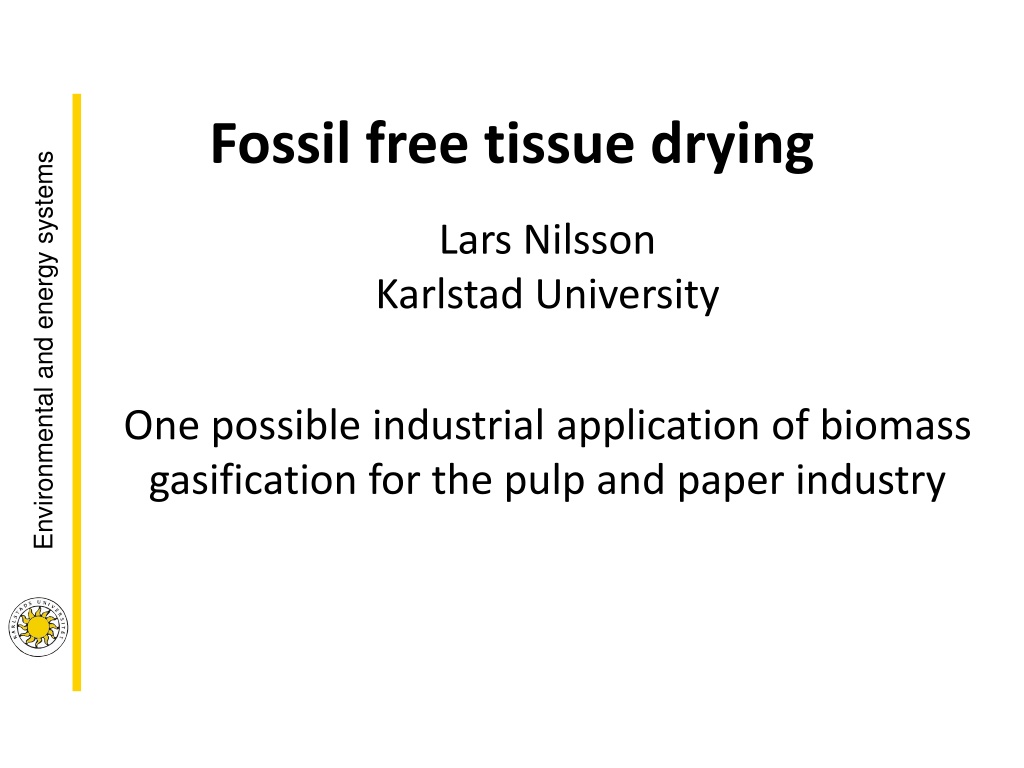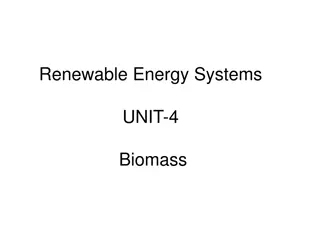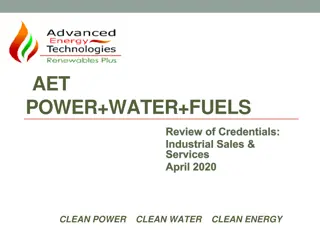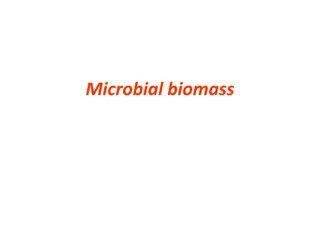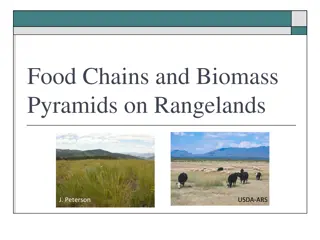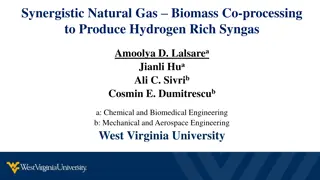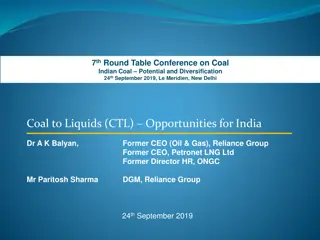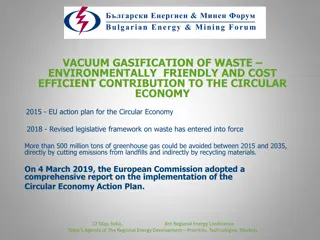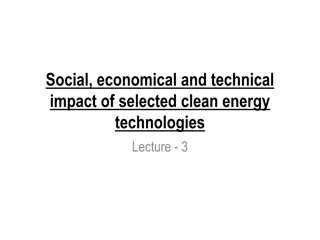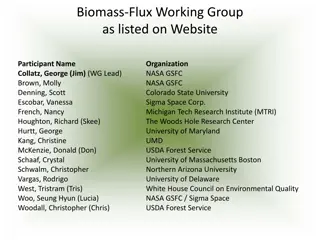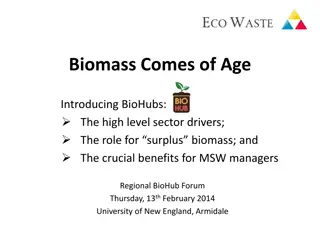Biomass Gasification for Pulp and Paper Industry Sustainability
Explore the sustainable application of biomass gasification in the pulp and paper industry, focusing on fossil-free tissue drying and energy systems. Discover proposed gasification technologies and the potential impacts on energy production and environmental sustainability.
Download Presentation

Please find below an Image/Link to download the presentation.
The content on the website is provided AS IS for your information and personal use only. It may not be sold, licensed, or shared on other websites without obtaining consent from the author. Download presentation by click this link. If you encounter any issues during the download, it is possible that the publisher has removed the file from their server.
E N D
Presentation Transcript
Fossil free tissue drying Environmental and energy systems Lars Nilsson Karlstad University One possible industrial application of biomass gasification for the pulp and paper industry
Environmental and energy systems Source: www.skogsindustrierna.org
Tissue products Environmental and energy systems - Toilet paper - Kitchen towels - Napkins - Facials - .
Tissue drying process Environmental and energy systems Condensing steam inside the cylinder Impinging hot gases
Research questions Environmental and energy systems Is gasification technology commercially available? Will the need for energy gas increase? Effects of process integration?
Scale of the gasification plant Environmental and energy systems Machine speed Machine width Grammage Press dryness Creping dryness Specific drying energy Impingement drying contribution 1500 m/min 3 m 17 g/m2 45 % 95 % 3,0 MJ/kg H2O 50 % Gas production roughly 2 MW GoBiGas 20 MW (demo) and 100 MW (full scale)
Proposed gasification technologies Environmental and energy systems Updraft fixed bed Not OK! Downdraft fixed bed OK!
Proposed gasification technologies (continued) Environmental and energy systems Suspension gasifier OK!
Proposed gasification technologies (continued) Environmental and energy systems Dual bed gasifier OK!
Proposed gasification technologies (continued) Environmental and energy systems Two stage gasifier OK!
Results from tissue drying model Environmental and energy systems Syngas has a lower heating value than LPG. A higher gas flow is needed. This means that more energy is used for heating the energy gas to the working temperature of the hood. A detailed simulation model has revealed that the increased need for energy gas is lower than 3 % for all cases investigated.
Integrated or stand-alone gasification? Environmental and energy systems Today, steam is produced in a bioboiler. Tissue drying is the main steam consumer. Today s biomass consumption is 2830 kg/h. Today, LPG for tissue drying is bought. When producing the energy gas on-site, excess heat can be used for steam generation.
Base case energy system Environmental and energy systems
Integrated gasification process Environmental and energy systems
Stand-alone gasification process Environmental and energy systems
Increased biomass consumption for replacing the bought LPG Environmental and energy systems
Benefits of process integration Environmental and energy systems Could the bought LPG be replaced with bought green energy gas?
Research questions revisited Environmental and energy systems Gasification technology is commercially available! - What about burners? Need for energy gas only increases marginally. Benefits of process integration are obvious! - Will green energy gas be available?
More details Environmental and energy systems
